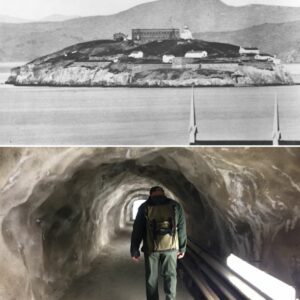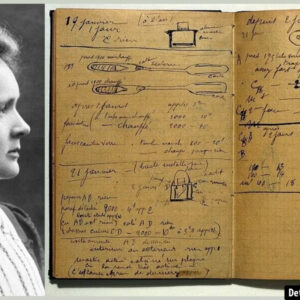Victorian London, a city of dazzling contrasts, was both the beating heart of a vast empire and a world steeped in poverty. During the reign of Queen Victoria, England stood as the world’s undisputed superpower, and London thrived as a metropolitan giant. While towering palaces and impressive architecture signified wealth and success, the darker, hidden side of the city revealed a different story—one of harsh poverty, overcrowded slums, and stark inequality. Today, thanks to colorized photographs, we can peer into this fascinating era with a clarity and vibrancy that once seemed impossible. These extraordinary images offer us a rare glimpse into the past, highlighting the beauty and the struggle that defined late 19th-century London.
The Power and Opulence of Victorian London
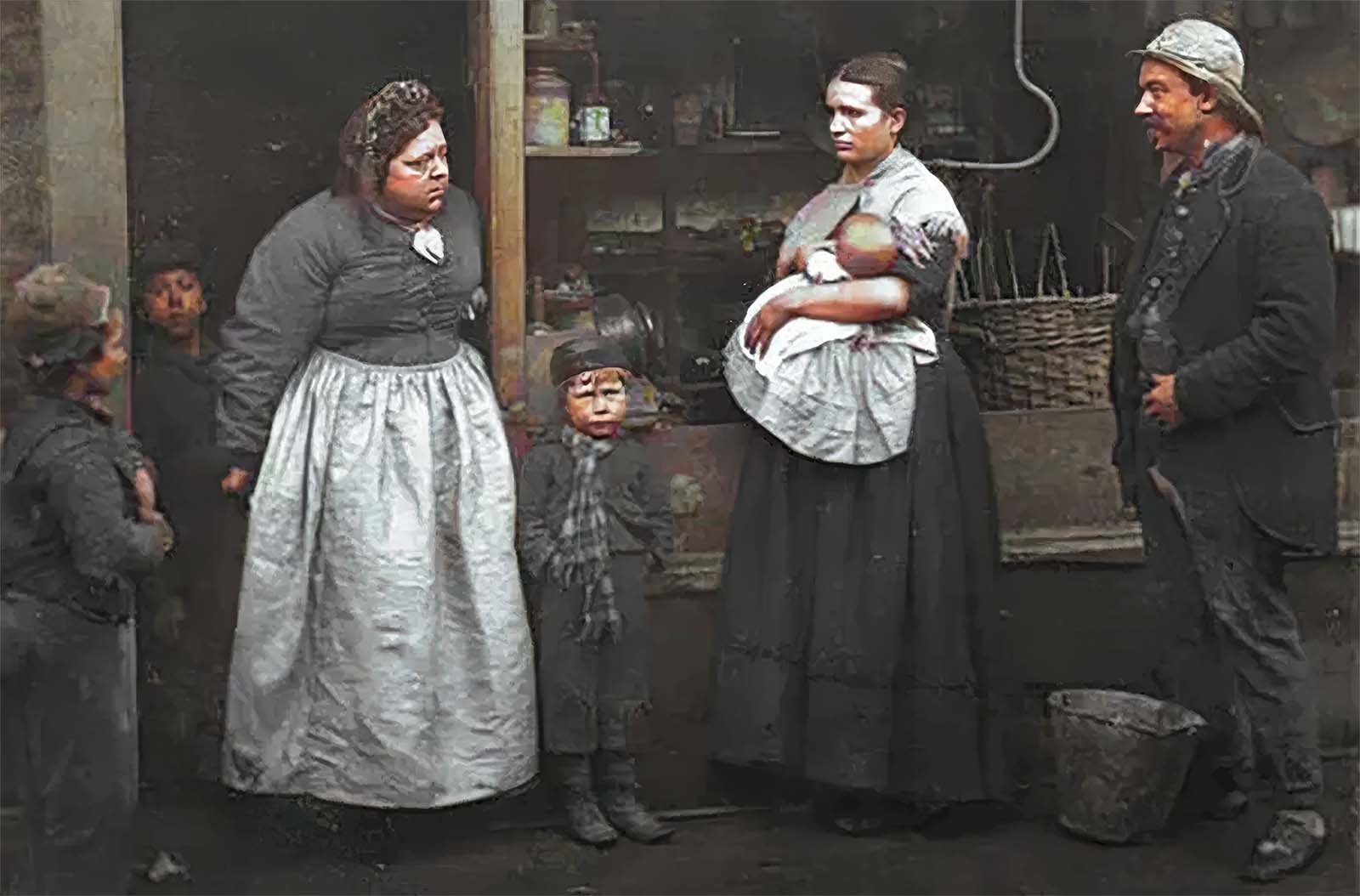
At the height of the Victorian era, London stood as the epicenter of an empire that stretched across the globe. Magnificent landmarks like the Tower Bridge, Westminster, and Buckingham Palace were all symbols of Britain’s power. The city was a beacon of culture, commerce, and technological advancements, marking a period of unprecedented industrialization and wealth accumulation. The construction of Tower Bridge, completed in 1894, showcased the city’s engineering brilliance, while the growing skyline of London was peppered with colossal buildings that whispered tales of affluence.
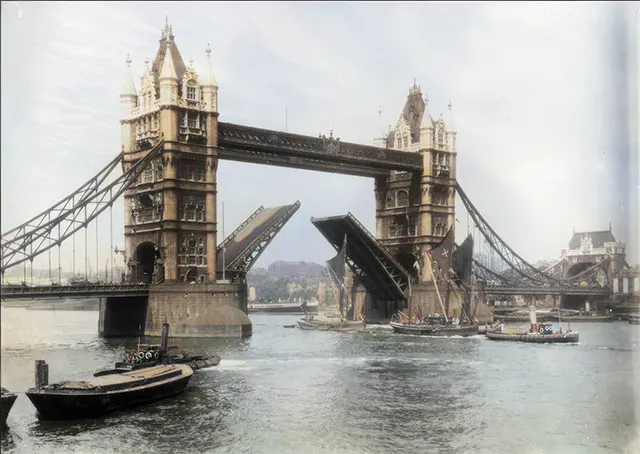
But even amidst all this grandeur, there existed a darker reality that lived just around the corner from the city’s most prestigious districts. The divide between the rich and the poor was undeniable, and it was within the shadows of these towering structures that the struggles of the working class were played out on a daily basis. These contrasts, captured in vivid color, bring the dual nature of Victorian London to life in a way that mere black-and-white images never could.
Video
Watch the Victorian Era Couple Live Like It’s The 19th Century video and see how this extraordinary couple embraces life as it was in the Victorian era!
The Dark Underbelly: Poverty and Struggles in the East End
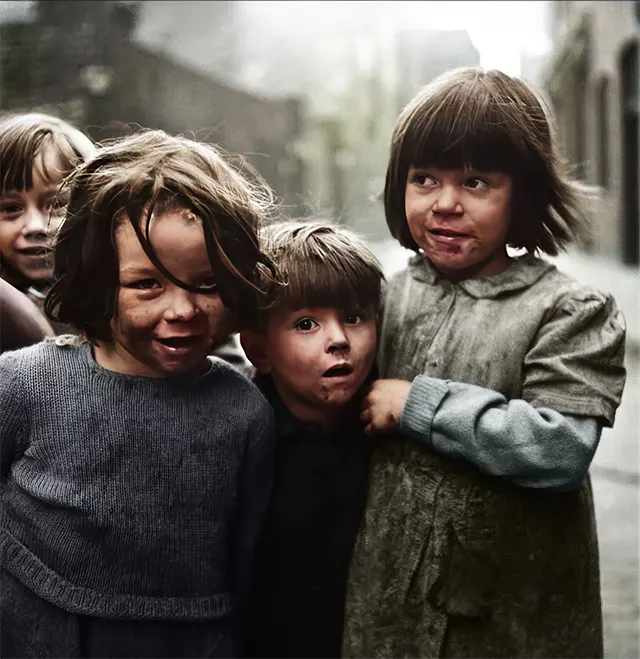
While London’s rich and powerful lived in comfort, the poor were often left to endure squalor in the city’s overcrowded East End. This region, with its economy focused on the docks and polluting industries along the River Thames, became notorious for its high crime rates, overcrowding, and the abject poverty of its residents. In fact, the 1881 census recorded over 1 million people living in this area, a third of whom lived in abject poverty.
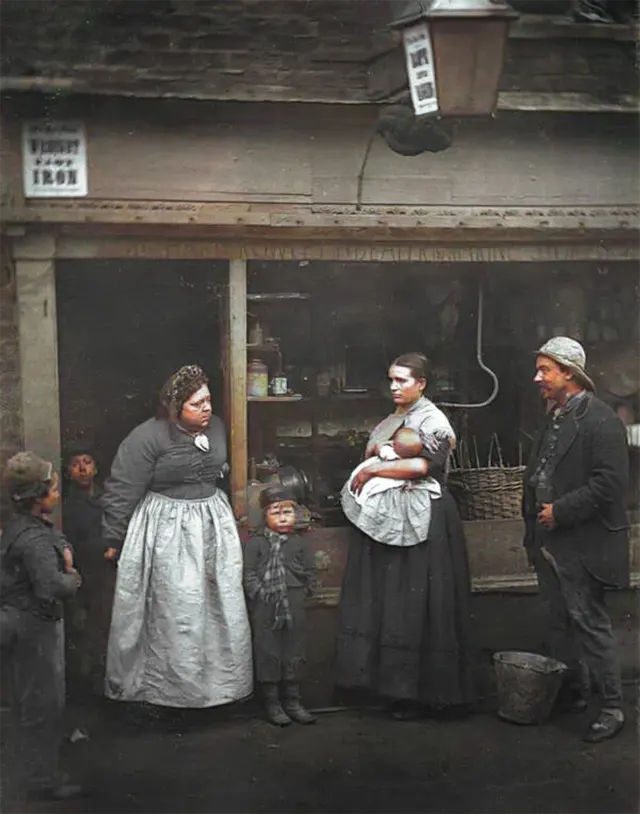
Photographs from this period, often showing the rundown streets and desperate faces of the East End’s inhabitants, vividly document the struggles faced by the working poor. Children and adults alike toiled in grueling labor, just trying to survive in a city that was seemingly indifferent to their suffering. A stark contrast to the elegance of the West End, these images of the East End remind us of the vast wealth disparities that marred Victorian society.
Everyday Life in Victorian London: From Street Sellers to Laborers
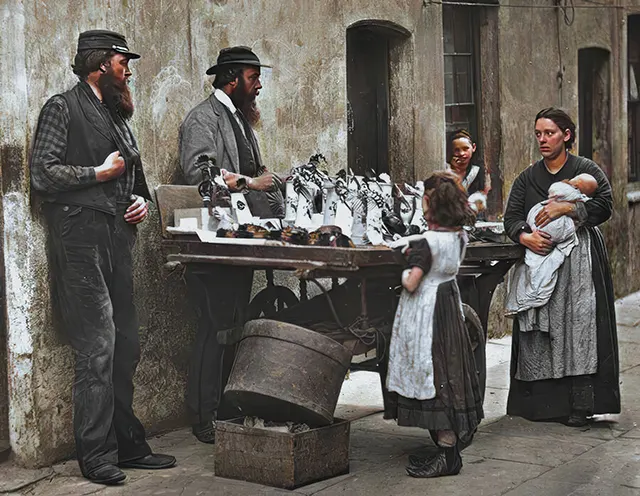
While the underclass faced incredible hardship, everyday life in Victorian London was far from dreary. The streets were alive with vendors selling their wares, street performers entertaining the masses, and the ceaseless bustle of a thriving city. Colorized images from this era show us street sellers using donkey carts to sell everything from fish to flowers, while children and laborers worked alongside their elders to make a living.
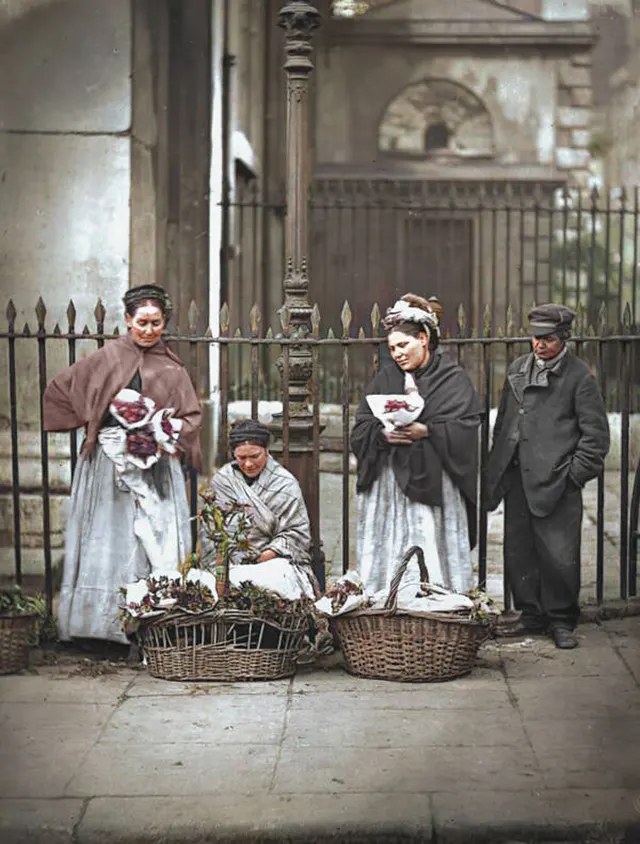
One of the more fascinating aspects of Victorian street life was the role of costermongers—street sellers who used donkeys to transport their goods. These colorful vendors were a common sight in places like Covent Garden, where flower sellers and fishmongers worked tirelessly to meet the demands of a growing population. In these photographs, we see how these vendors, though often struggling to make ends meet, were essential parts of the city’s fabric.
Life in the Slums: The Poor of London
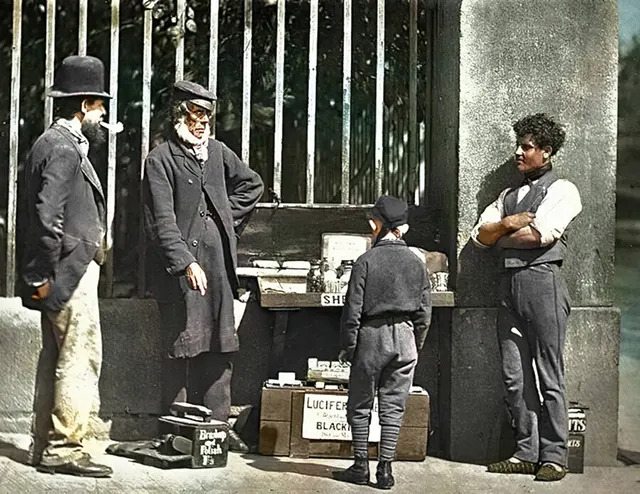
For the poorest inhabitants of London, life was often unbearable. The slums of the East End, with their overcrowded conditions and lack of basic sanitation, were home to families living in dire poverty. Children, too young to work, often played in the streets, their lives defined by hardship and deprivation. These haunting images, captured in color, show us the everyday lives of slum dwellers, from families trying to make a life in the streets to children who never knew the comforts of a safe home.
American author Jack London’s “The People of the Abyss” paints a vivid picture of the East End’s misery. He describes his journey into this part of the city, noting the overwhelming sense of poverty and deprivation. In his book, he writes of slum areas where “miles of bricks and misery” stretched as far as the eye could see. His firsthand account, combined with the photographs of the time, gives us a chilling look at life for those trapped in the city’s underbelly.
Victorian London in Color Photos: Street Performers, Children, and Workers
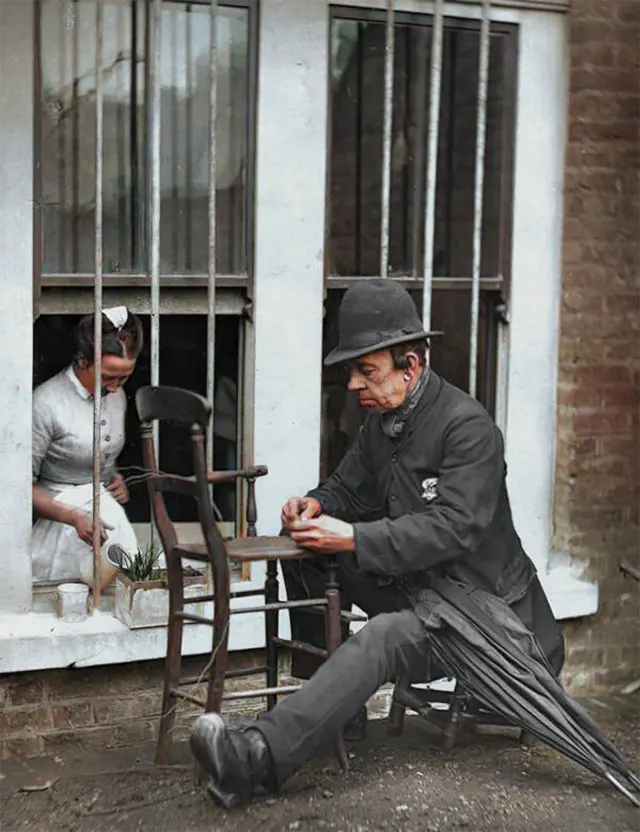
Despite the overwhelming poverty, life in Victorian London was filled with activity. Street performers, including clowns and musicians, were a constant feature of city life. The famous clown “Caney,” whose image is captured in one of these colorized photos, reminds us of the resilience of Londoners even in the face of hardship. Caney, once a popular street performer, continued to entertain despite his circumstances, offering a glimpse into the unique and varied life of the working class.
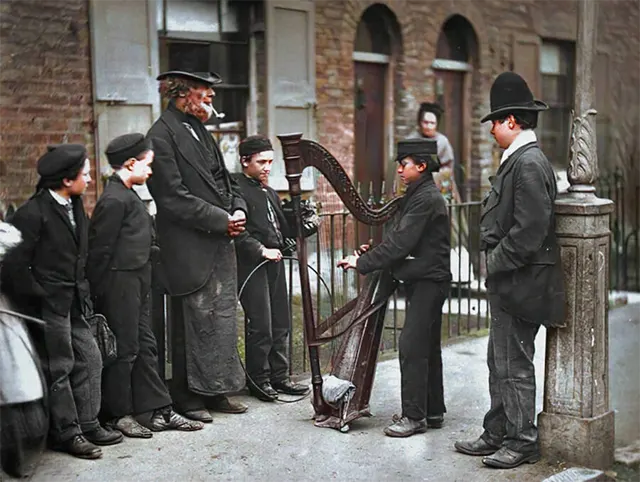
Children, too, were often seen working in the streets. Shoe-shiners, laborers, and even those seeking work with coal merchants were just some of the youngsters trying to survive in the bustling metropolis. These young faces, often filled with a sense of determination, speak volumes about the resilience of the city’s poorest residents.
London’s Iconic Landmarks and Public Spaces
While much of Victorian London was filled with poverty and hardship, the city also boasted iconic landmarks that are still recognized today. Tower Bridge, with its unique design and drawbridge feature, stands as a testament to the city’s industrial prowess. Images of these landmarks, alongside the everyday life of Londoners, provide a balanced view of the city—one that highlights both the opulence and the struggles that coexisted within its walls.
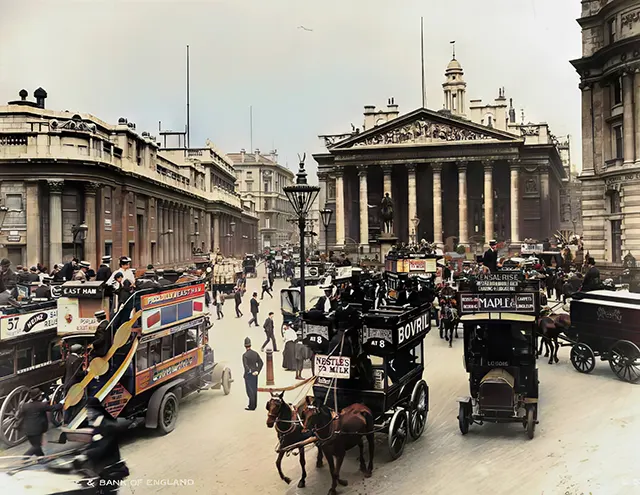
The streets around the Bank of England and the Royal Exchange were filled with a different kind of bustle—the hustle and bustle of finance and commerce. In colorized images, we see men in top hats purchasing fish, street vendors peddling their goods, and women in Victorian garb gathering around secondhand clothing shops. These images capture the vibrancy of London’s economy, a stark contrast to the squalor found just a few miles away.
Gallery of Images: A Visual Journey Through Victorian London
The true power of these colorized photographs lies in their ability to transport us back in time, offering a window into the lives of those who lived during the Victorian era. From the grand towers of Tower Bridge to the street vendors and slum children, these photographs bring to life the vibrant yet often harsh realities of Victorian London. Each image serves as a testament to the resilience of a city and its people—both those who thrived and those who struggled to survive.
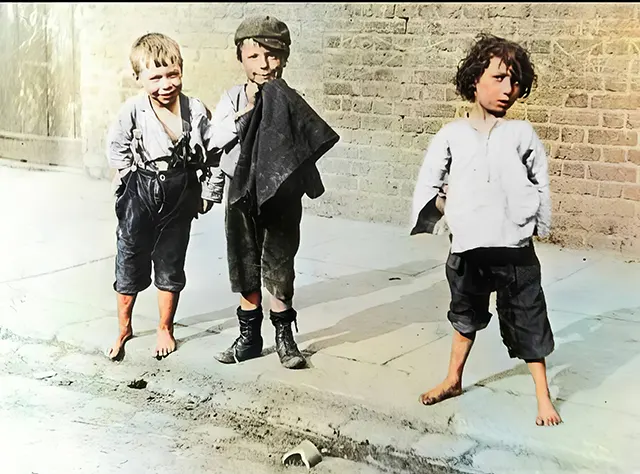
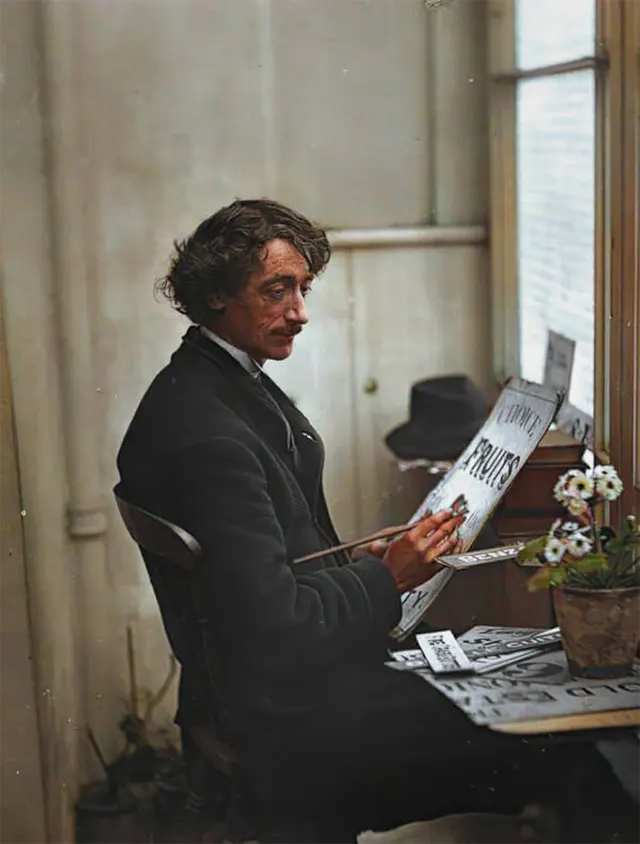
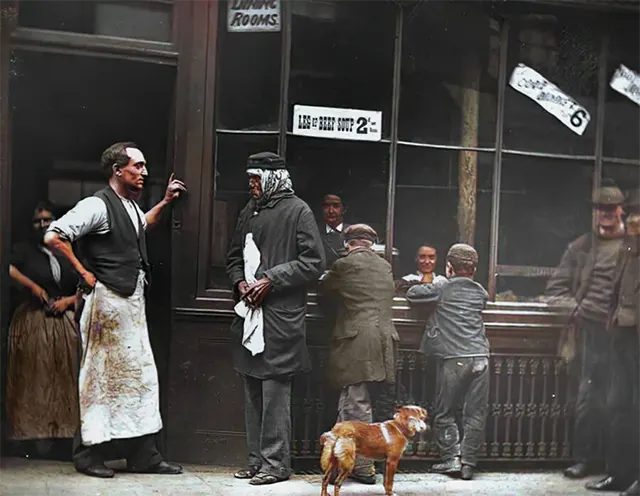

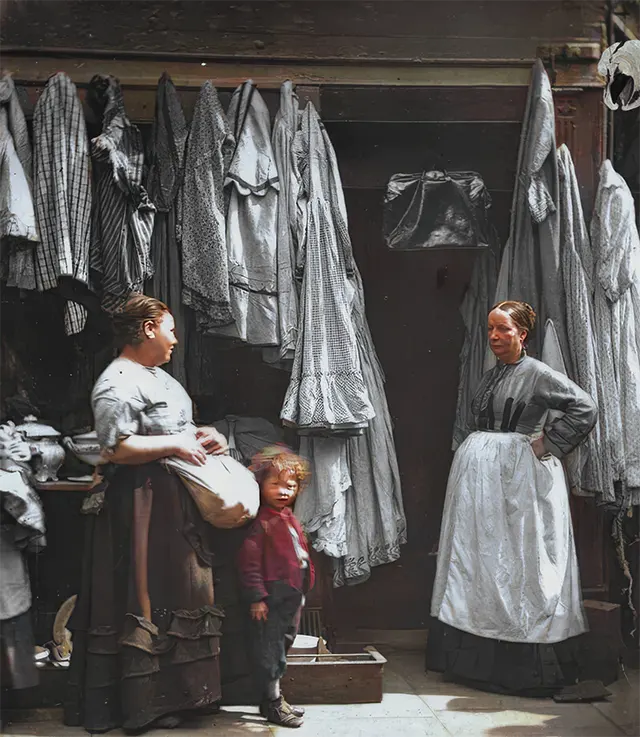
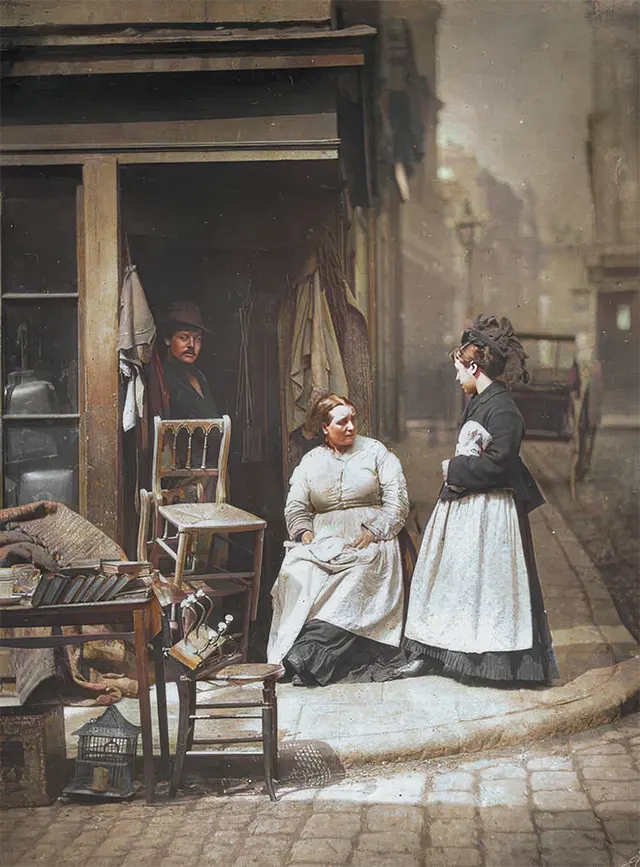

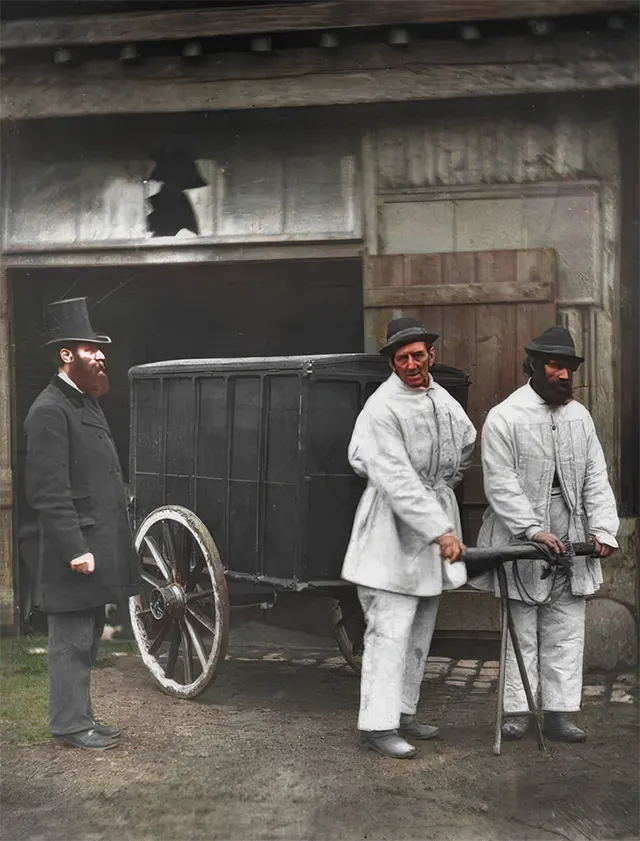
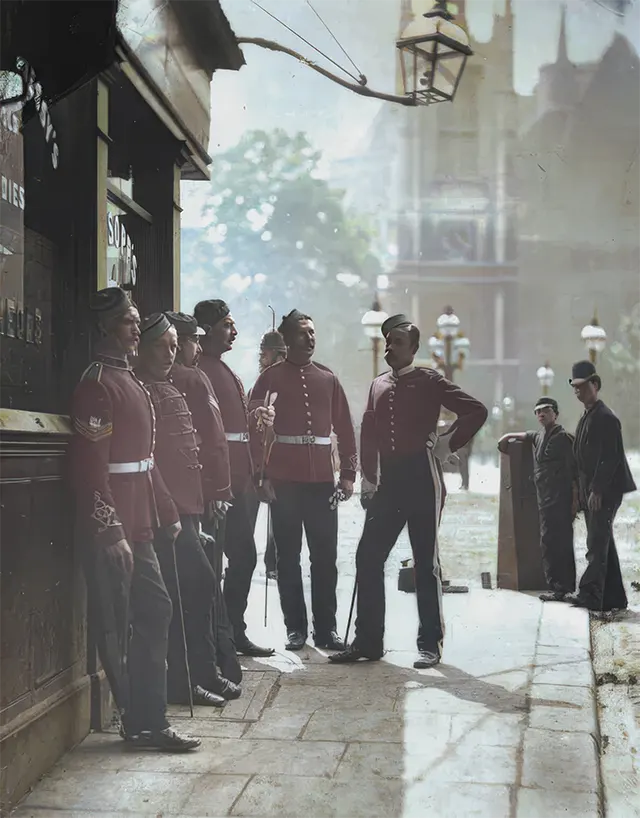
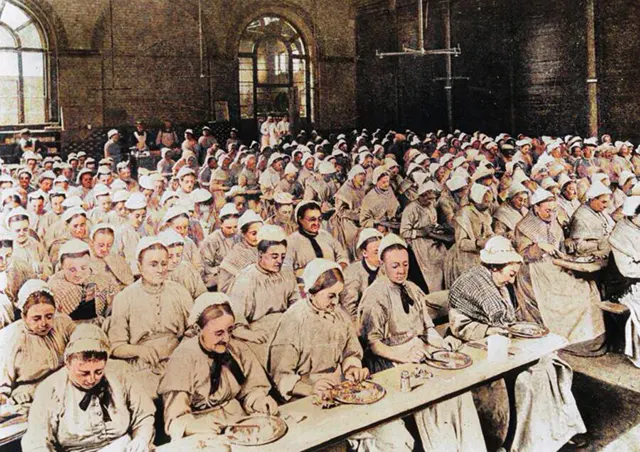

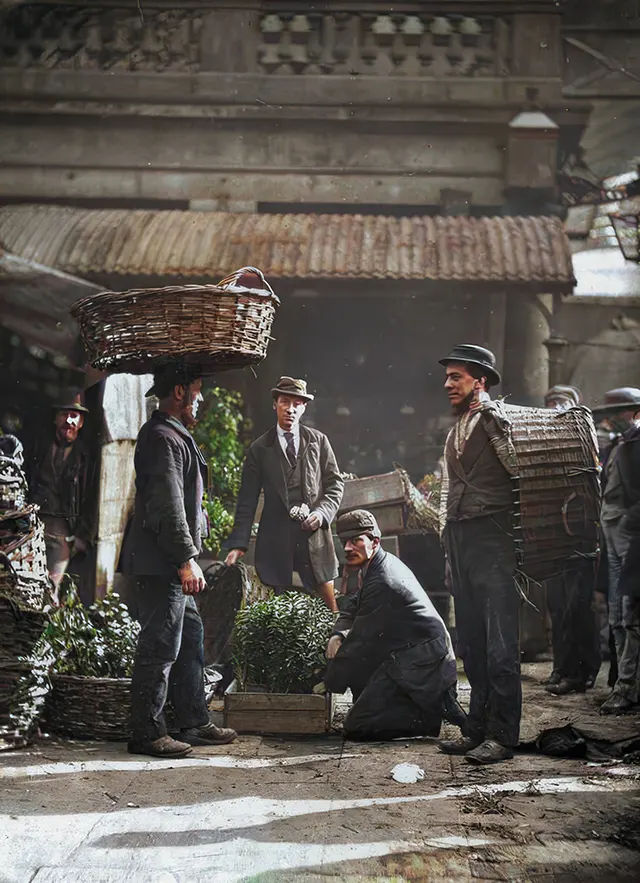
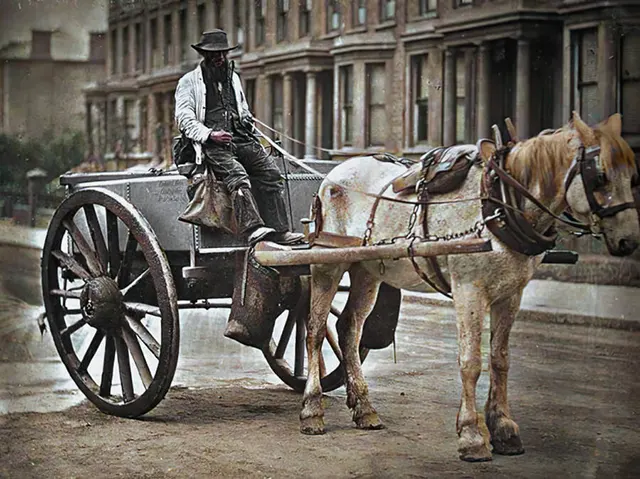
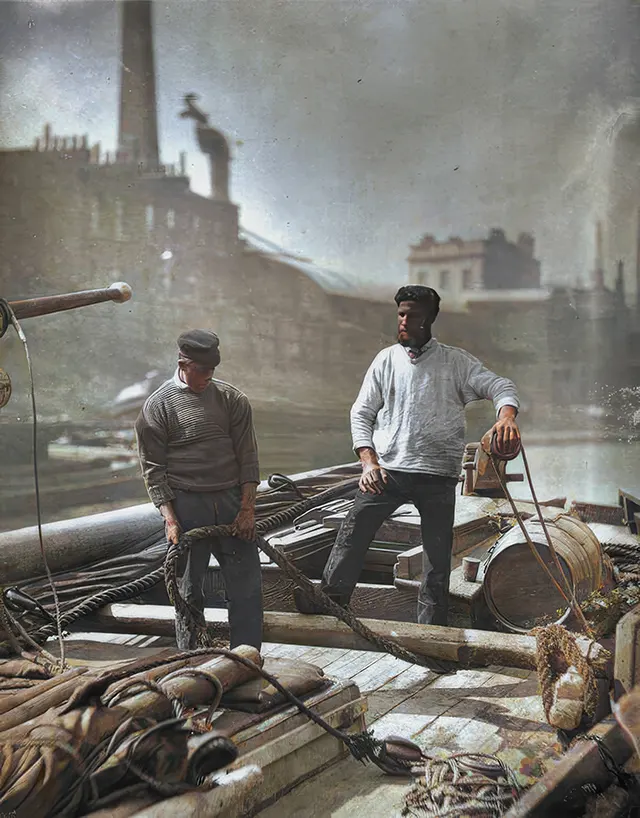
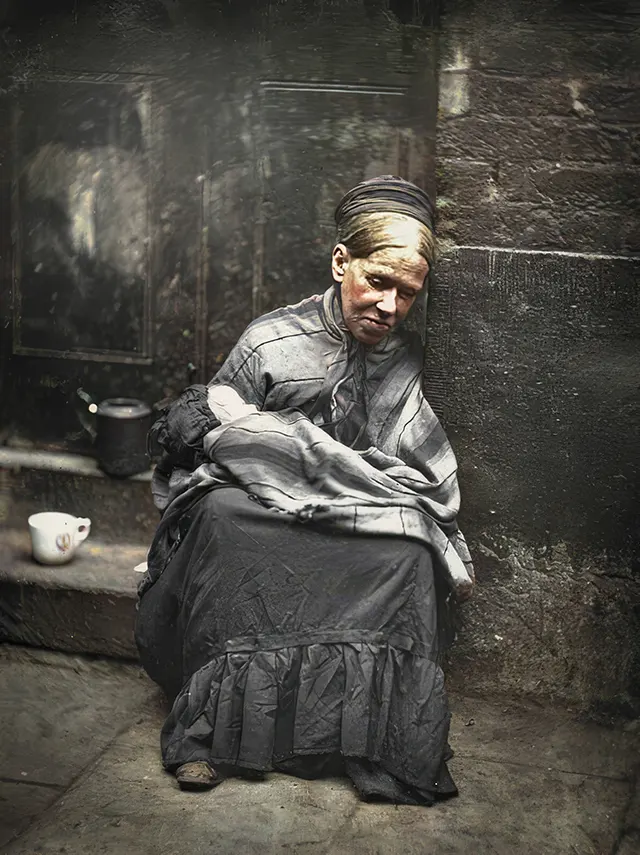
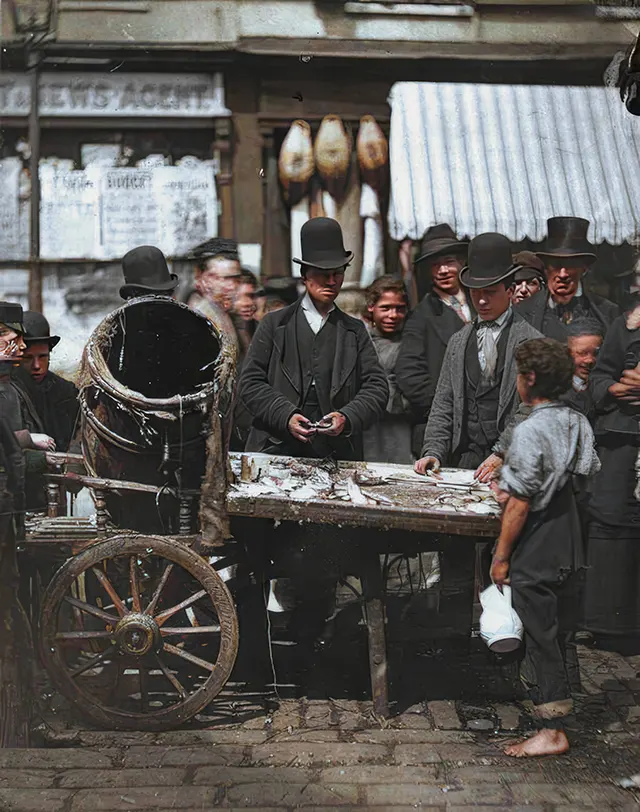

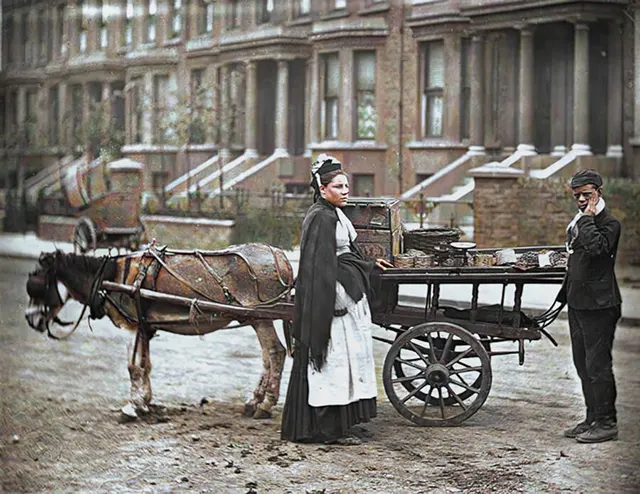
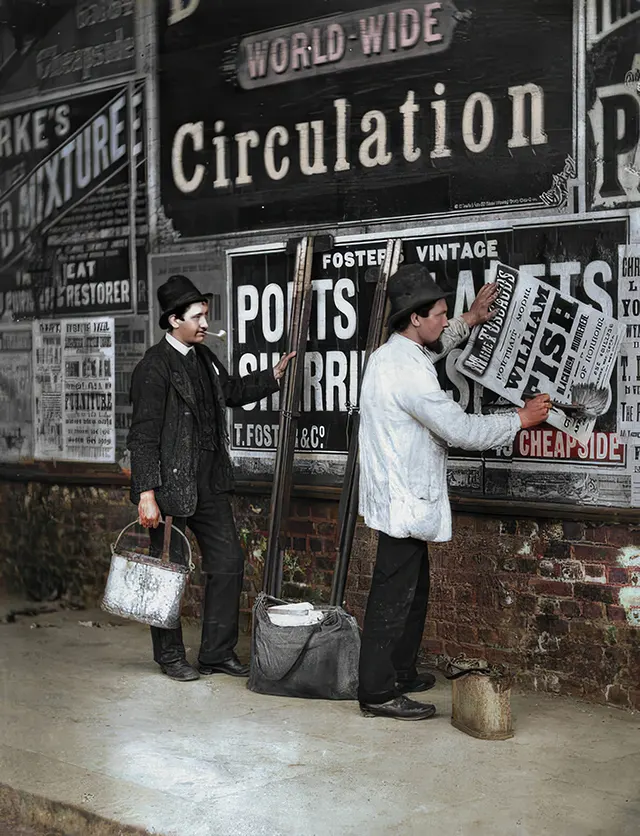
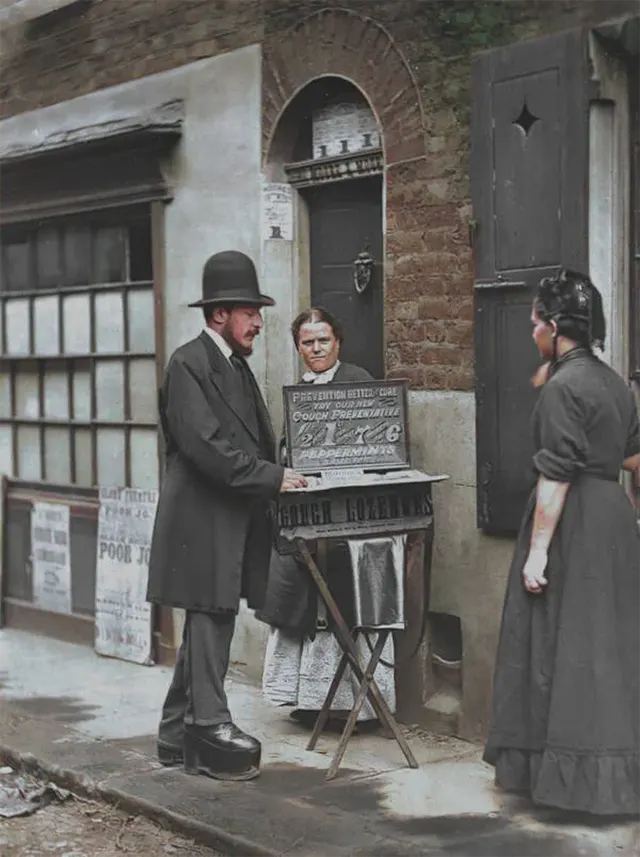
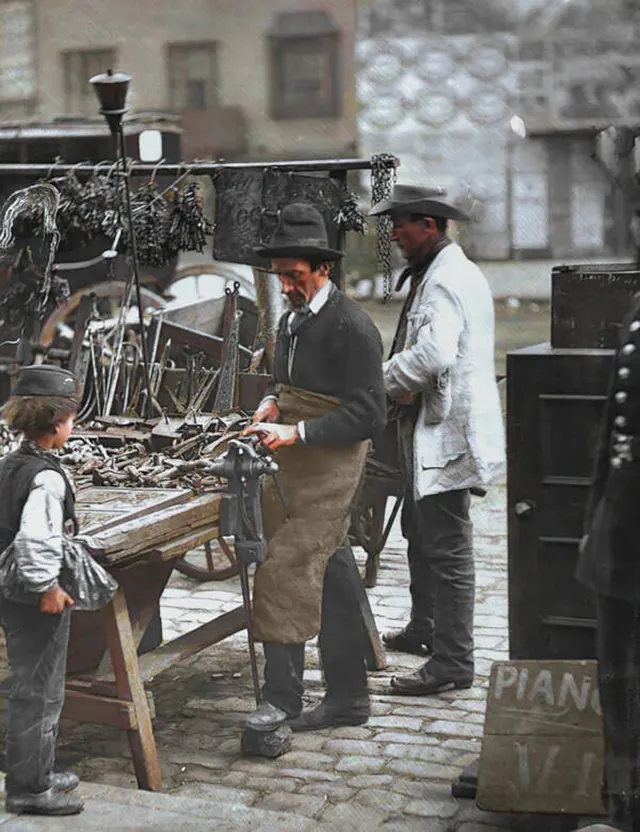

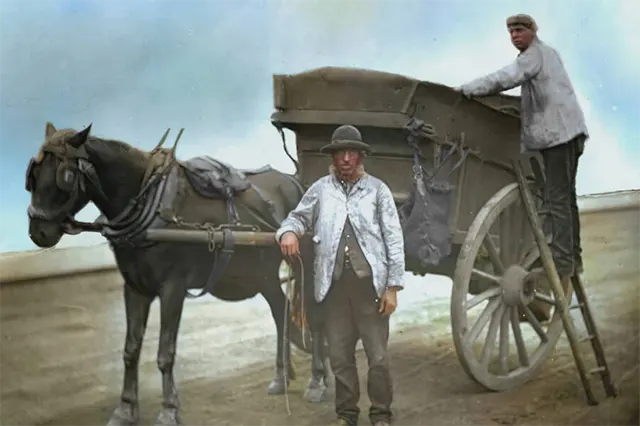
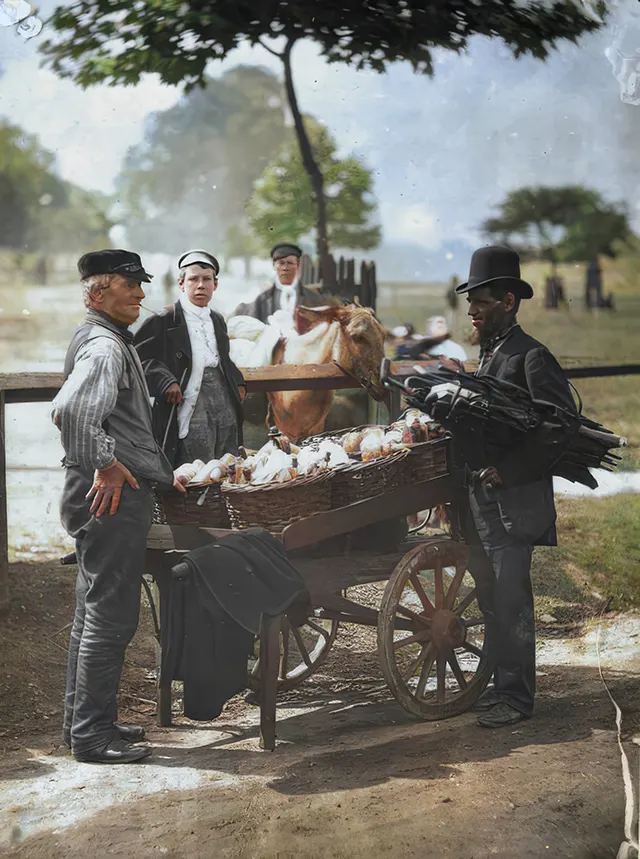
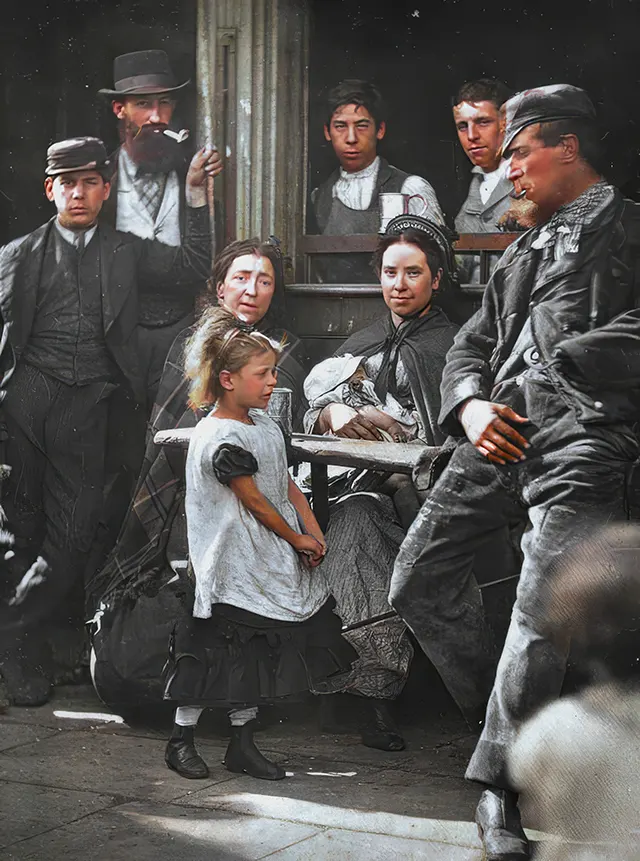
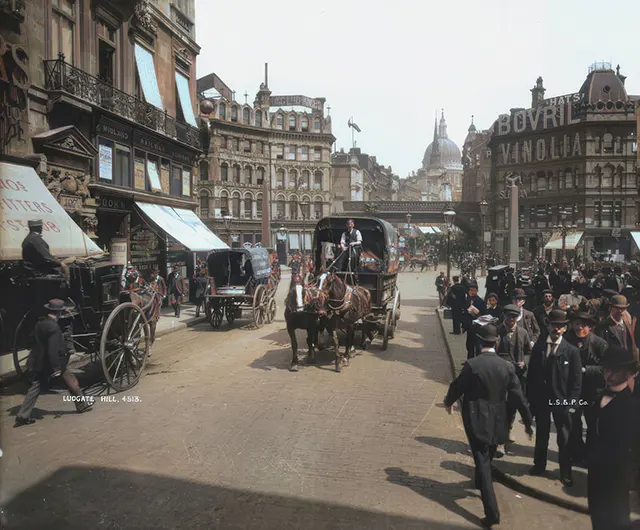
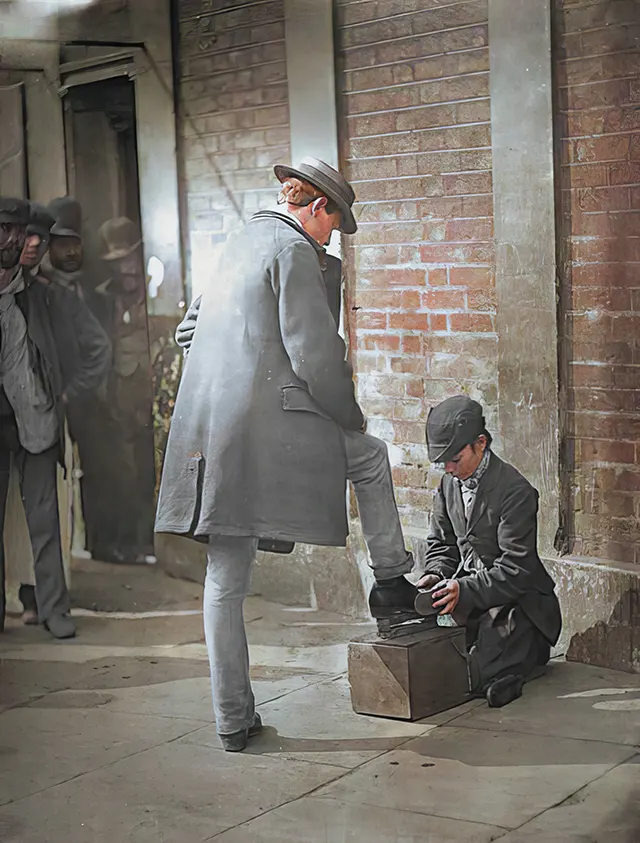

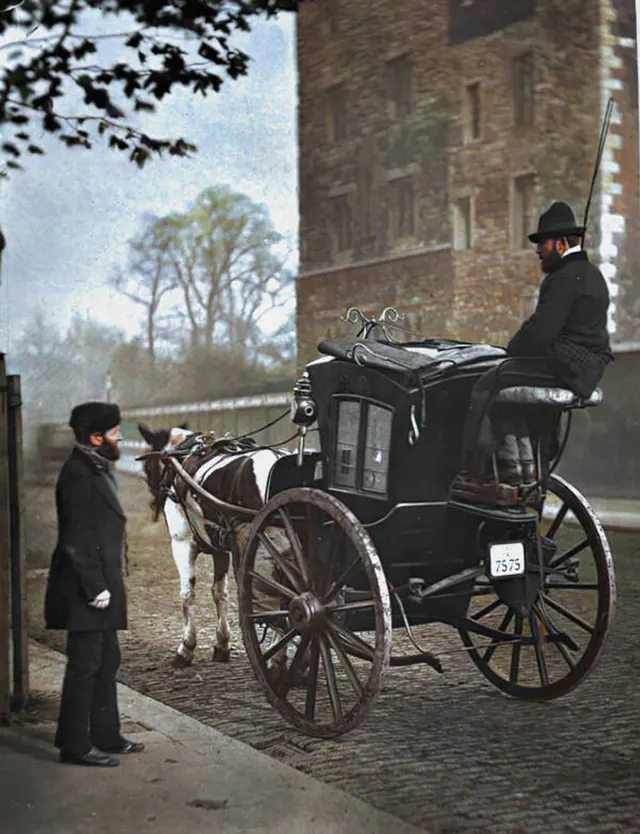

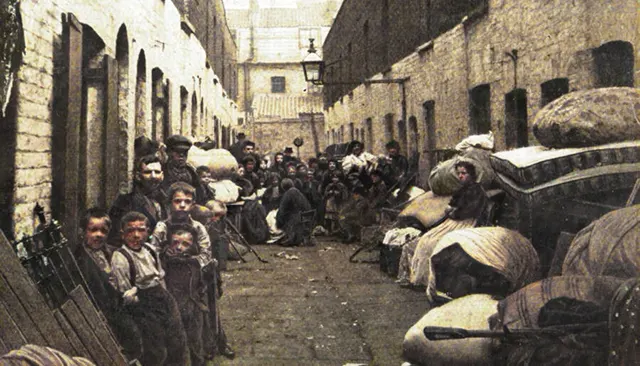
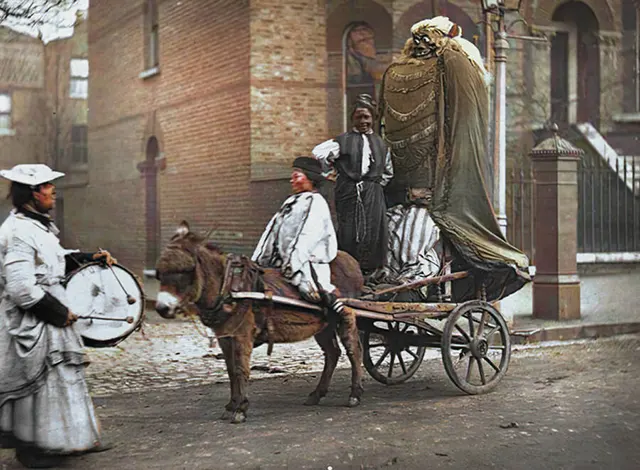
Video
Watch the 60 fps video of laborers in Victorian England, 1901, and experience this historical moment in stunning clarity!
Conclusion: The Legacy of Victorian London
The colorized photos of Victorian London give us more than just a glimpse into the past—they allow us to experience it. The wealth, the poverty, the beauty, and the struggles are all captured in these vivid images, reminding us of a time when the city was both a center of industry and an epicenter of human hardship. By viewing these photos, we can better understand the complex and often painful history of one of the world’s greatest cities. And while much has changed since then, the legacy of Victorian London continues to shape the modern city we know today.

